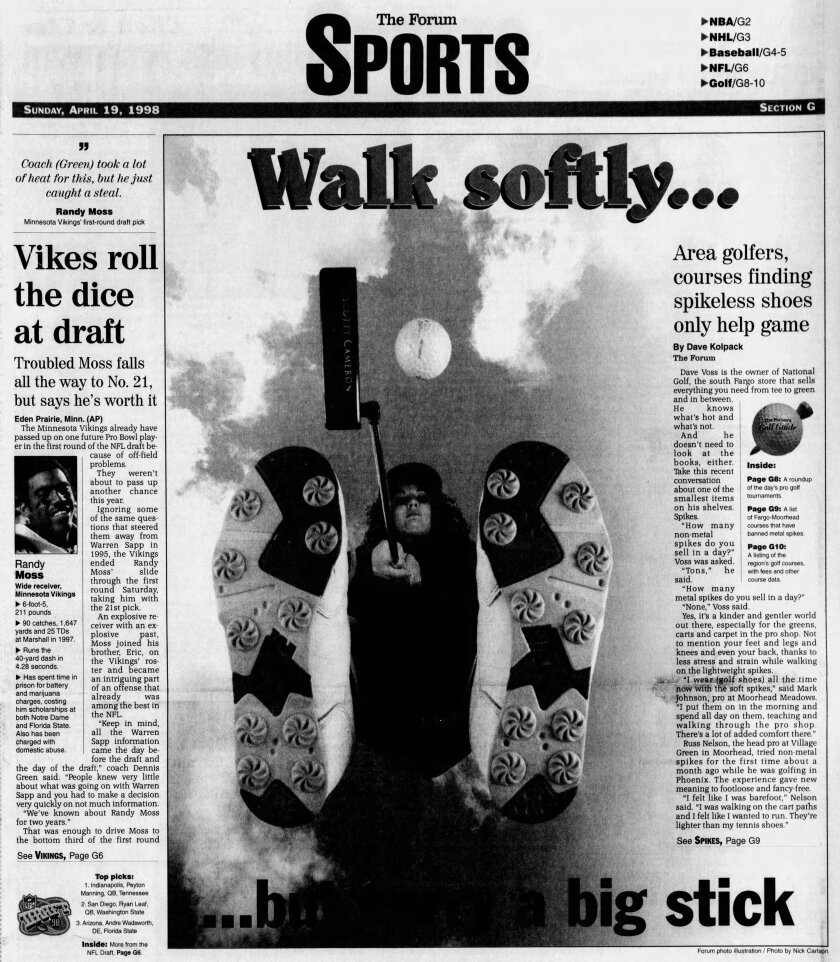After several months of writing the “Sports Time Machine,” it’s been incredible to turn through the archives of our company newspapers with the ease of a mouse click.
Forum Communications has dedicated itself to preserving its newspapers, some going all the way back to the late 1800s with our first microfilm rolls. And yes, you can have access too through
ADVERTISEMENT
There’s a magnet on my family’s refrigerator that I bought at the Newseum in Washington, D.C., years ago. It reads: “Journalism is the first rough draft of history,” a quote by Philip Graham, the former publisher of The Washington Post. Graham was born in Terry, South Dakota, and was the husband of Katharine Graham, who eventually took over the paper and was influential during its Watergate reporting.
Newspapers and other media are the world’s thread to its past. The internet just needed to catch up.
We no longer have to load and listen to the whirling spindles of microfilm in the office or a library; the ability to search our archives is an amazing accomplishment.
Anyone searching our newspapers — more and more titles are being added monthly — will notice a trend. More photographs. Early newspapers were most likely to use some kind of sketch for illustration. Cartoons were popular too.

As newspaper photography increased, so did the size of the photos. Larger photographs became the norm in the 1980s. Color photographs began to appear more frequently in the 1990s, along with a plethora of photo illustrations and graphics.
Those of us in our 50s or older have lived through quite an array of methods of music delivery. Radio, 8-track, cassette, CDs, MP3s and streaming. Photography is much the same, from film to digital cameras to cell phone images that serve most needs.
Our company has used a variety of image storage methods, from cross-referenced negatives in the film era to storing our archives on our website platforms.
ADVERTISEMENT

As for your family, it may vary. Do you still favor printing your digital photos and displaying them in albums? Do you share your photos electronically? Do you spend some time and create online albums for easy reference? Do you hope your Facebook account with your thousands of photos will be active long after you live?
A few years ago, I was listening to a radio show where the hosts discussed the storage needs of today’s technology. When families passed down grandma’s photo album, it was a sight to see. There could be a wrinkled and slightly faded photograph of her in 1935 next to her family’s new car.
Tomorrow, you might be sharing a 2 terabyte file with your grown-up children containing the 385,871 photos along with random screenshots of bills, grocery lists and documents.
Then, look ahead 50 more years, will your children add to your collection? Will they be paying $25 per month or more for online storage? Will they hand down 4 terabytes to their children to find that photo of your 2012 fishing excursion?
I take photos for my job, and it's become second nature to take hundreds of photos of my kids’ activities. Rare is the event I’m not shooting or videotaping one of my sons' events.
I’ve been told by another family member to live in the moment and enjoy their youth without the extra lens.
Someday.
ADVERTISEMENT
In fact, when my oldest son played in the Red River Amateur golf tournament last year, I offered to be his caddie. He turned me down. He wanted the photographs (surely to post on the 'Gram instead) and a video or two for that TikTok platform.
I obliged, but please keep your tee shot to the right on hole No. 2, kid.
We hear a lot about retirement planning, but are there digital planning classes available?
Sign me up.
Believe me, we do our share of printing our cell phone masterpieces and sliding them behind a sheet of plastic. Those are still the best.
But as we talk about preserving our history, the question is, how are you preserving yours?
Share your comments below. I’d love to hear your digital plans.
ADVERTISEMENT













